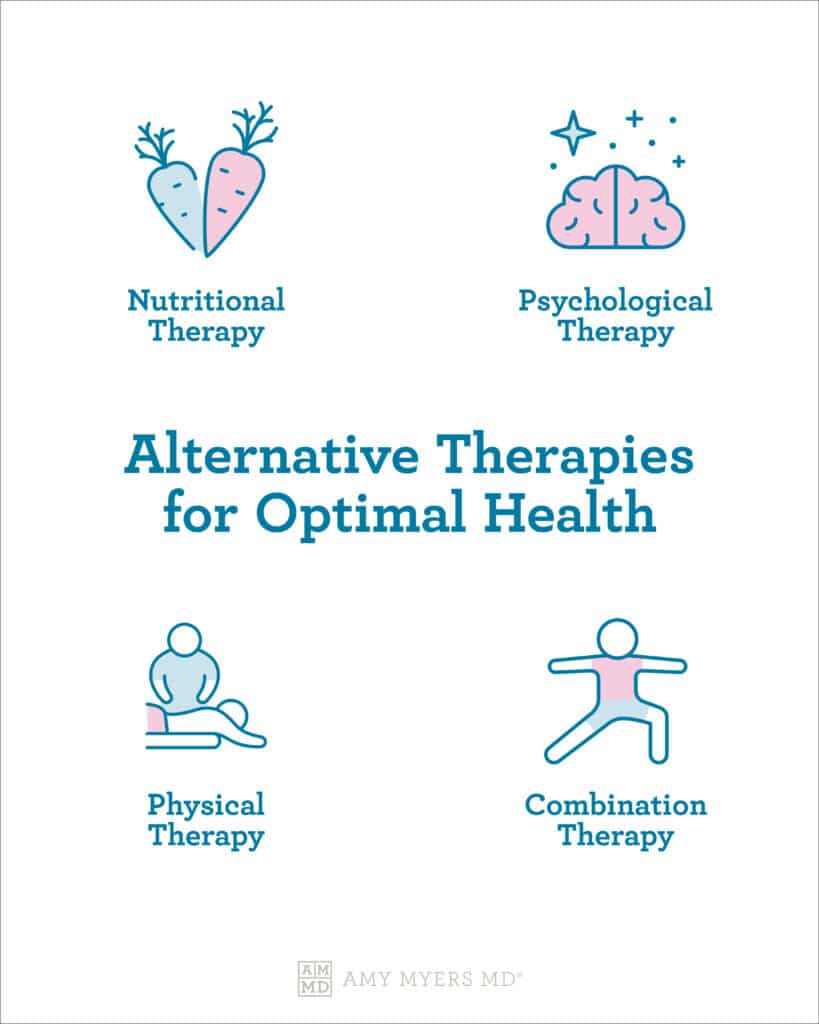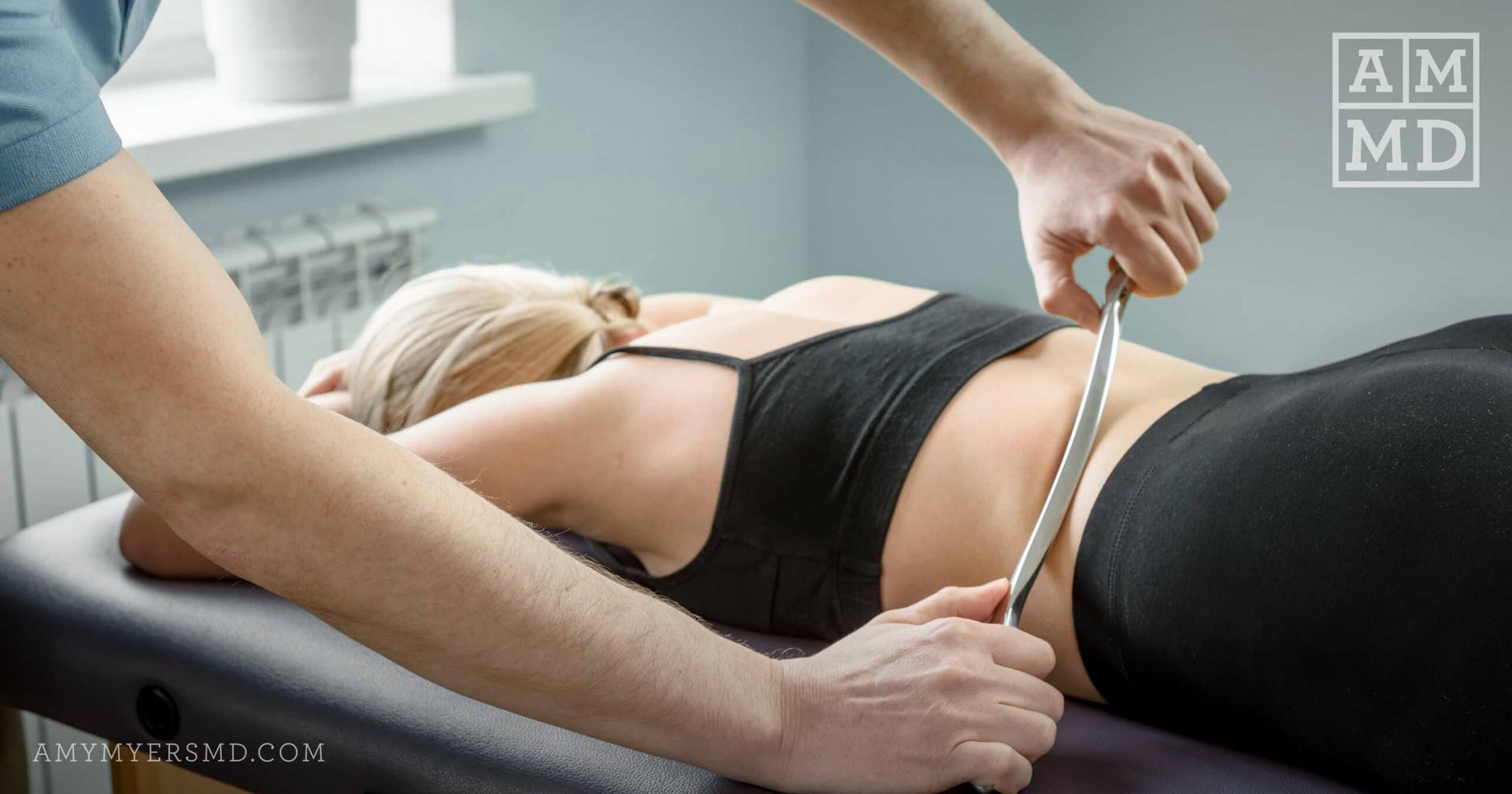You’re probably familiar with a few different types of alternative therapy. Maybe you’ve heard of cryotherapy, or the latest new craze – ice bath therapy. There are many different types of alternative therapies out there. These range from therapies such as cupping, contrast tub therapy, float therapy, and red light saunas.
So, are they helpful?
Alternative therapies are not really all that new. As a matter of fact, did you know that cryotherapy was developed as an alternative treatment for rheumatoid arthritis? In 1978, Dr. Toshima Yamauchi was looking for a treatment for rheumatoid arthritis. He discovered that cryotherapy reduced inflammation and had positive effects on the immune system.1
Cryotherapy isn’t the only alternative therapy that has been around for a while. Restorative yoga, chiropractic care, and aromatherapy have been around for decades, yet only recently became mainstream. Even functional medicine is considered an alternative therapy by the very definition. The practice of functional medicine has been around for centuries.
I’m going to talk more about the different types of alternative therapies and give you the tools to determine if they are right for you. Alternative therapies could be exactly what you need to take back your own health. Let’s discuss what exactly defines something as an alternative therapy.
An Alternative to Conventional Medicine
The term alternative therapy describes any form of medicine or healing that does not fall into conventional medicine practice.2 By that definition, functional medicine is an alternative therapy to conventional medicine.
Conventional Medicine vs. Functional Medicine
Conventional medicine focuses on treating symptoms rather than getting to the root cause of them. Conventional medicine views people in terms of their disease, a one-size-fits-all model. It focuses on naming a disease and giving a pill for that disease. This practice is becoming increasingly true as conventional medicine becomes more specialized and more fractured. Conventional medicine views symptoms and diseases as separate entities within the body.
Functional medicine, which has been described as 21st century medicine, is a science-based approach to healing which looks at function in the body. As a functional medicine doctor, I view the body as a whole and seek out why you have the illness instead of naming the disease and giving a pill.
More people are turning to alternative therapies because conventional medicine fails so many people, especially when it comes to chronic illness. Let’s talk about what actually makes something an alternative therapy.
How Alternative Therapies Are Classified
Alternative therapies are classified by the way they are delivered. For example, adjusting your diet due to a food intolerance would be classified as nutritional therapy, which is one of four classifications of alternative therapies. You’ve likely heard of most or all of these categories because many have made their way into conventional medicine. The other classifications of alternative therapies include psychological therapy, physical therapy, and combination therapy.
I’m going to tell you about the four classifications of alternative therapies and the different types of therapies under its umbrella.
 Dr. Amy Myers
March 23rd, 2022
https://content.amymyersmd.com/article/alternative-therapies/Alternative therapies – infographic – Amy Myers MD®
Dr. Amy Myers
March 23rd, 2022
https://content.amymyersmd.com/article/alternative-therapies/Alternative therapies – infographic – Amy Myers MD®Nutritional Therapy
Unlike our ancestors, who ate a complete Paleo diet, our diet today is full of heavily processed foods filled with sodium, trans fats, and refined sugars. Because heavily processed foods are often low in nutritional value, this way of eating has led to malnourishment, the development of diabetes, and destroys the gut microbiome. Over time, this can lead to leaky gut and autoimmune disease.
Nutritional therapy uses food and herbs to prevent and reverse diseases that are common in today’s society. Specialty diets like gluten-free, Paleo, keto, and vegan are all considered to be types of nutrition therapy.
I recommend that everyone removes gluten and dairy from their diet. Gluten causes intestinal permeability because it triggers the release of zonulin, a protein that tells the tight injunctions in your gut to open up, creating leaky gut. Dairy causes inflammation in a large number of the world’s population, due to lactose intolerance or a sensitivity to casein and whey proteins found in cow’s dairy.
Taking supplements such as vitamins and minerals also fall under the nutritional therapy umbrella. Modern agriculture has increased food supply, yet it has also stripped the nutrients from the soil that grows our food in the process. This is called soil depletion.
Psychological Therapy
The definition of wellness goes deeper than simply exercising and following a nutrient-rich diet. The importance of mental health is becoming more mainstream. We are even learning more about the connection between our mental health and our physical health.
If not addressed, chronic stress can take a toll on your gut microbiome and lead to autoimmune disease, advanced aging, and adrenal fatigue.
Physiological therapies are designed to reduce stress. I’ll discuss more examples later, however physiological therapies include meditation, listening to music, relaxation techniques, cognitive behavioral therapy, and hypnosis.
Physical Therapy
Physical therapy, often referred to as healing by touch, involves therapists placing their hands on a person’s body with the intention to heal.3 It is based on ancient healing practices and is used to help people relax, ease pain, and help them heal faster. Forms of physical therapy include chiropractic care, massages, acupuncture, tai chi, and Reiki, also known as healing energy.
Combination Therapy
Combination therapy involves combining one or more of the therapies mentioned above. Most of the time, physical therapies are considered combination therapies because they can work to heal your body and mind simultaneously.
Examples of a combination of physical and psychological therapies include yoga which is physical therapy combined with psychological therapy, dance therapy, and art therapy.
New Types of Alternative Therapies
Yoga, chiropractic care, and meditation have become more mainstream in the past 10 years. These alternative therapies have been practiced in functional medicine for centuries. Over the past few years, new types of alternative therapies are also becoming more popular. Here are some of the ones I’ve discovered.
Red-Light Therapy
Red-light therapy (RLT) is a therapeutic technique that exposes you to low levels of infrared light. Instead of traditional saunas that rely on humidity to heat up the room around you, infrared saunas emit wavelengths that you immediately absorb in your skin. Localized heat sent right to the source means tolerable temperatures, a quicker, deeper sweat, and a number of health benefits such as:
- Detoxification
- Relaxation
- Pain relief
- Weight loss
- Improved circulation
- Skin purification
I have a red-light sauna in my home from Sunlighten Saunas that I use daily. It is so relaxing and helps me get my daily sweat without much effort at all. If buying your own red-light sauna isn’t a practical option, more and more wellness clinics and sports medicine offices offer red-light therapy.
Cryotherapy
Imagine stepping into a tube that’s -200 degrees fahrenheit for less than 5 minutes. That sounds cold, doesn’t it? What if I told you, however, that the benefits from those 5 minutes range from pain relief, weight loss, and stress reduction?
The word cryotherapy literally means “cold therapy.” It is an umbrella term for a range of alternative therapies that use extreme cold as a form of treatment. As I mentioned earlier, cryotherapy was developed as a treatment for rheumatoid arthritis (RA). It has been used for years to reduce inflammation, pain, and swelling.4
There are many different types of cryotherapy such as cryoskin therapy, which typically targets your stomach to promote weight loss. Cryofacial therapy is also becoming popular as a skin treatment for your face. Using ice packs, taking an ice bath, or even a cold bath or shower can offer you similar benefits.
Float Tub Therapy
Float therapy, also referred to as restricted environment stimulation technique (REST), involves floating in a shallow pool of warm water with a high concentration of magnesium salts to put a person in a relaxed state. Magnesium promotes a healthy inflammatory response, muscle recovery, boosts metabolism, and supports brain health.
By reducing the force of gravity on the body, float therapy can ease pressure on the joints and muscles. After a float therapy session, many people report calmness, tranquility, and total mind and body rejuvenation. There are a lot of float tub therapy offices opening all over the U.S. These sessions can also be expensive, ranging from $40 to $50 each time. Taking a bath in epsom salts or homemade bath salts can have the same effect.
Scraping Therapy
Scraping Therapy, also known as gua sha, involves a technician applying pressure using a dull massage tool to repeatedly scrape oiled or wet skin in a downward motion. This helps increase blood flow to the affected area, which can boost metabolism and promote healing. It is usually performed on the back, neck, glutes, and extremities.
The process is straightforward and simple, yet it has some very impressive benefits. Gua Sha reduces inflammation and chronic muscle and joint pain. Studies suggest it may be more effective and provide longer-lasting results compared to traditional hot packs in people with chronic back pain.5
Scraping therapy sessions tend to cost about $45 each time. Using a foam roller on your muscles has similar effects and is a cheaper alternative.
Ice Bath Therapy
Ice bath therapy is a cool wellness trend that involves plunging in cold water that’s roughly 20 to 50 degrees fahrenheit for up to 2 minutes. There are many versions of this type of therapy, including jumping into a cold tub and getting right out. The benefit is that it stimulates the lymphatic system and adrenal glands.
Ice bath therapy has many other benefits. It supports a healthy immune system, boosts metabolism, facilitates a healthy inflammatory response, and improves your mood. It does this by boosting the release of happy hormones such as oxytocin, endorphins, serotonin, and dopamine.6
Since ice bath therapy is becoming so popular, specialized ice bath tubs are being sold everywhere. They can cost around $5,000 but a high quality tub such as Plunge is so worth it! Or instead of buying a special tub, you can fill your regular bathtub with cold water and ice to reap the benefits.
Are Alternative Therapies Right for You?
More people are seeking out alternatives to conventional medicine. As a functional medicine doctor and autoimmune patient, I know all too well the pitfalls of conventional medicine. Conventional medicine failed me and it’s my mission to not have it fail you, too.
It is encouraging to see so many people wanting to take back their health and try alternative therapies as a way of achieving optimal health. For added support, The Myers Way® Autoimmune Kit is the perfect combination of supplements for anyone looking to support optimal immune system function and balance.
These alternative therapies have many benefits and I recommend trying them out and determining what works for you. The best part is that many of them can be done in your own home without expensive equipment or the need to go to a specialized facility. If you try any of these alternative therapies comment below and let me know how it worked for you!

Article Sources
- Whole-body cryotherapy in rehabilitation of patients with rheumatoid diseases--pilot study. D Metzger, et al. Rehabilitation. 2000.
- What is alternative medicine, and does it work?. Jennifer Huizen . Medical News Today. 2021.
- Therapeutic Touch. University of Minnesota's Earl E. Bakken Center for Spirituality & Healing. 2021.
- Local Cryotherapy, Comparison of Cold Air and Ice Massage on Pain and Handgrip Strength in Patients with Rheumatoid Arthritis. Nadica Laktašić Žerjavić, et al. Psychiatria Danubina vol. 33. 2021.
- The effects of Gua sha on symptoms and inflammatory biomarkers associated with chronic low back pain: A randomized active-controlled crossover pilot study in elderly. John W M Yuen. Complement Therapy Medicine. 2017.
- An Overview on Ashwagandha: A Rasayana (Rejuvenator) of Ayurveda. Narendra Singh, et al. African journal of traditional, complementary, and alternative medicines . 2011.
